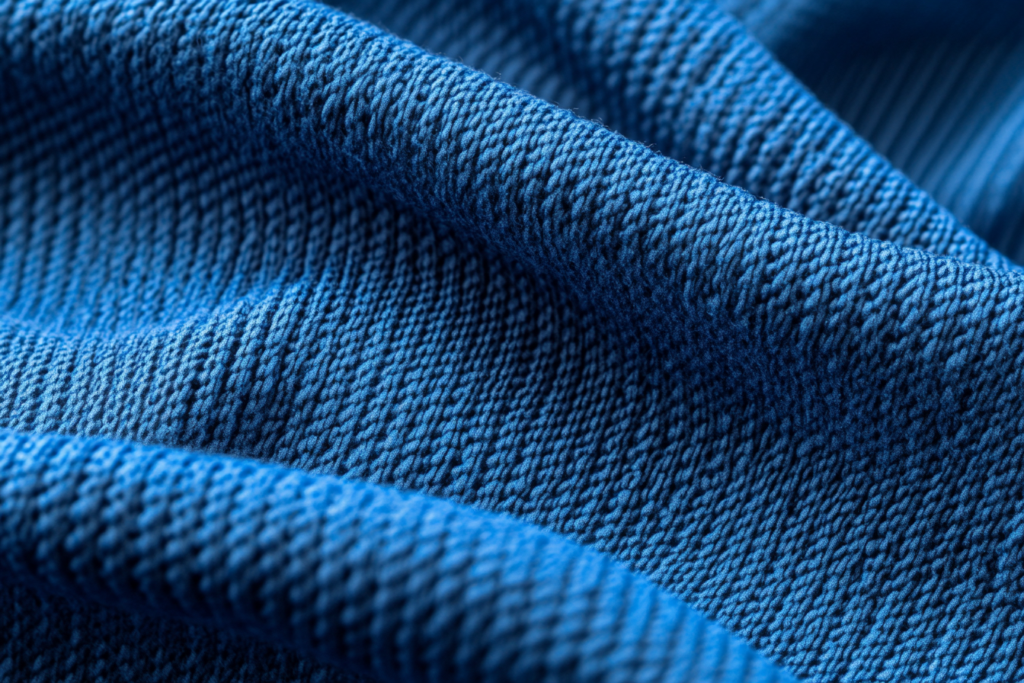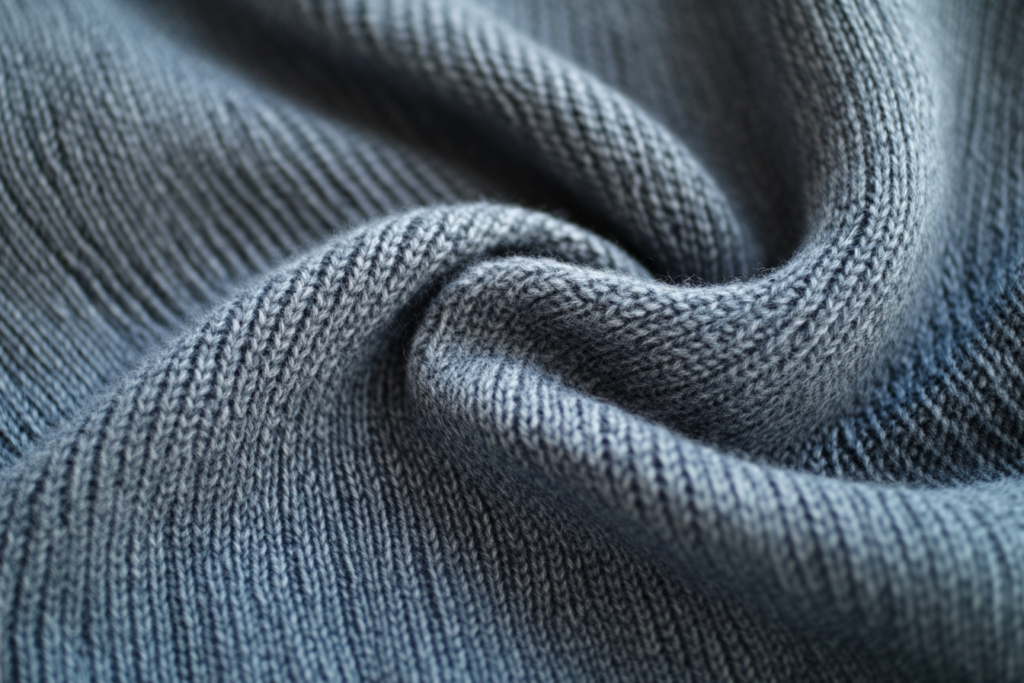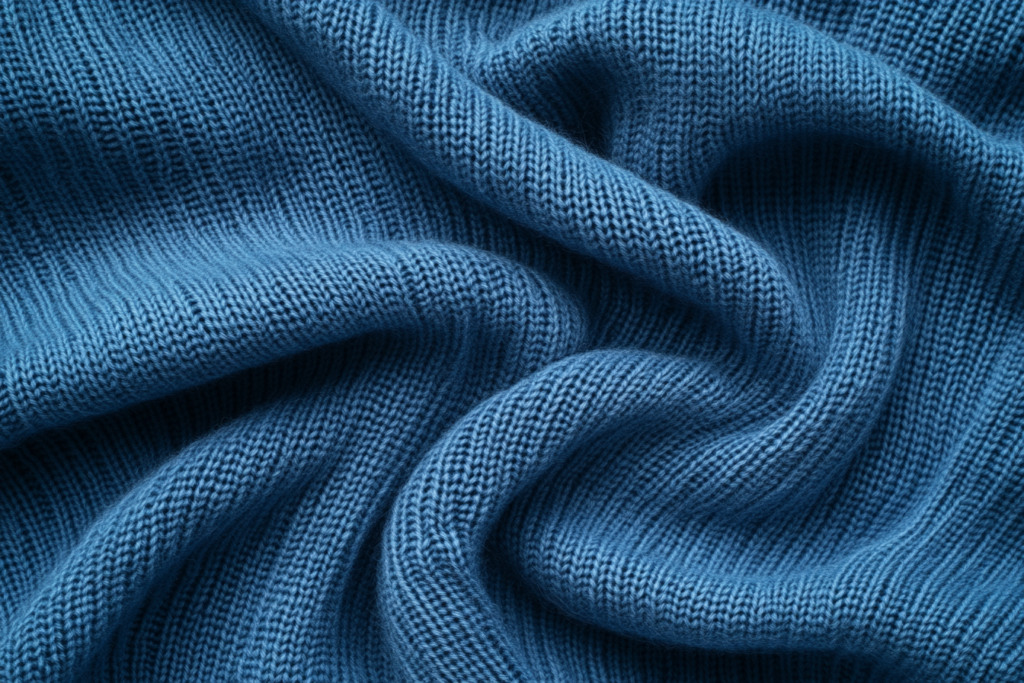Interlock Fabric: A Stable, Reversible Knit with a Smooth Finish
Meta Description: Interlock fabric is made from two separate 1×1 rib weaves, creating a stable, reversible knit with a smooth surface. Learn about its properties, uses, and advantages.
What is Interlock Fabric?
Interlock fabric is a double-knit fabric made from two separate 1×1 rib weaves that are interconnected. This construction makes the fabric smooth on both sides, stable, and slightly thicker than single jersey knits.
Interlock is reversible, durable, and soft, making it a popular choice for apparel, activewear, baby clothing, and premium knitwear.


Key Features of Interlock Fabric
✔ Double-Knit Construction – Formed by two layers of 1×1 rib knit, making it thicker than standard jersey.
✔ Smooth on Both Sides – Unlike single jersey, interlock has a uniform, polished surface on both the front and back.
✔ Stable & Resilient – Holds its shape well and resists curling at the edges.
✔ Soft & Comfortable – Ideal for sensitive skin, loungewear, and baby clothes.
✔ Stretchy & Flexible – Offers natural stretch without added elastane, making it great for fitted garments.
How is Interlock Fabric Made?
- Two 1×1 Rib Weaves – The fabric is formed by knitting two layers of 1×1 rib fabric together.
- Loops Interlock – Each stitch interlocks with the stitches of the opposite side, creating a dense, reversible structure.
- Smooth & Firm Knit – The finished fabric has a fine texture and excellent stability.
This unique knitting process makes interlock fabric thicker, softer, and more durable than regular jersey.
Interlock vs. Other Knit Fabrics
| Feature | Interlock Fabric | Single Jersey Knit | Rib Knit |
|---|---|---|---|
| Texture | Smooth on both sides | Smooth front, rough back | Raised, textured ridges |
| Stretch | Moderate, even stretch | Stretchy but curls at edges | Very stretchy |
| Thickness | Thicker due to double knit | Lightweight | Medium thickness |
| Durability | More stable, doesn’t fray | Less stable, edges curl | Sturdy but more elastic |
| Best For | T-shirts, activewear, baby clothes | Basic tees, dresses | Cuffs, collars, waistbands |
Interlock fabric is more structured and polished than jersey, while less stretchy but more stable than rib knits.
Common Uses of Interlock Fabric
📌 T-Shirts & Polo Shirts – Provides a soft, breathable feel with a polished finish.
📌 Leggings & Activewear – Offers stretch and durability for movement.
📌 Dresses & Loungewear – Comfortable for casual and sleepwear.
📌 Baby Clothing – Soft and gentle on sensitive skin.
📌 Underwear & Base Layers – Provides warmth without bulk.
Advantages of Interlock Fabric
✔ No Curling Edges – Stays flat when cut, making it easy to sew.
✔ Durable & Long-Lasting – Holds shape well, resists wear and tear.
✔ Soft & Breathable – Feels gentle against the skin, perfect for all-day comfort.
✔ Wrinkle-Resistant – Doesn’t wrinkle easily, making it low-maintenance.
✔ Reversible Design – Can be used on either side, reducing waste.
Conclusion: Why Interlock Fabric is a Staple in Fashion
Interlock fabric offers a perfect blend of softness, stability, and durability, making it a go-to material for comfortable, high-quality knitwear. Whether in activewear, baby clothes, or premium T-shirts, interlock ensures a smooth finish and long-lasting performance.
Its double-knit construction, resistance to curling, and natural stretch make it a versatile and practical choice for designers and consumers alike.



